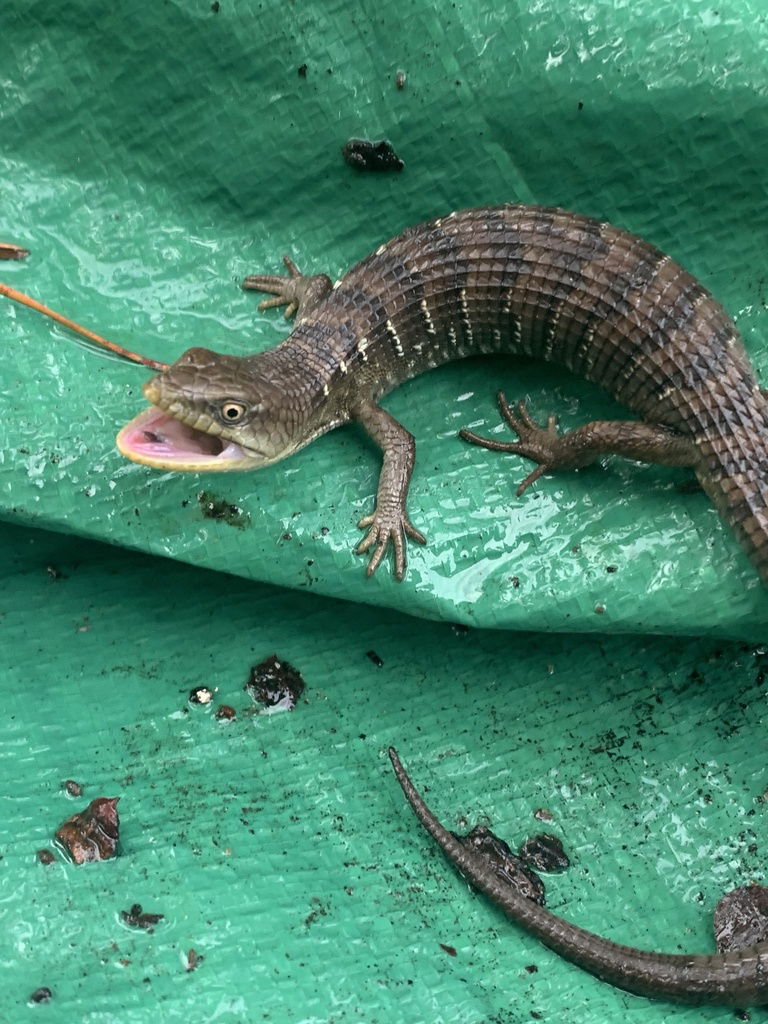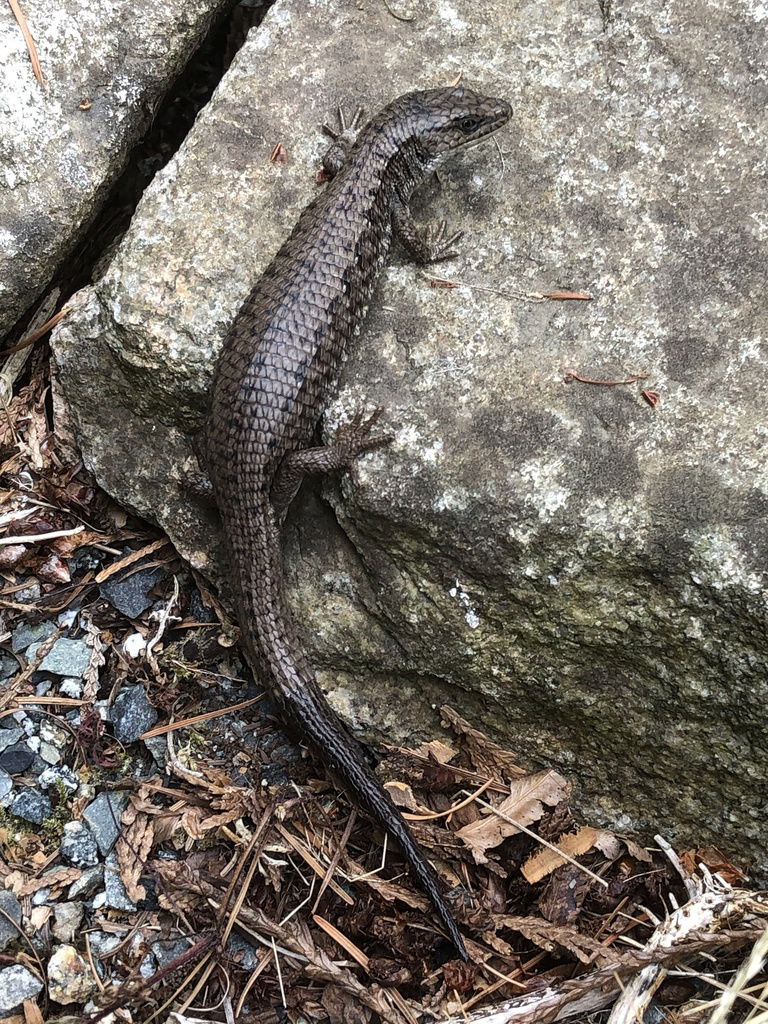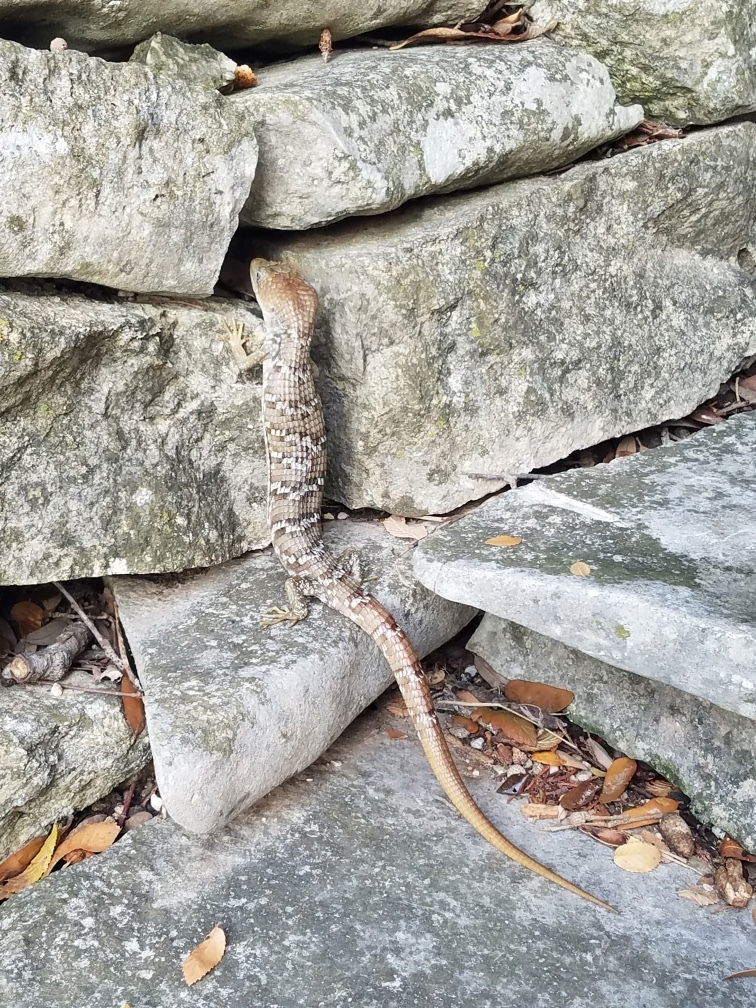Lizard, Snake, or Worm?
Observation by Lisa Redfern, CC0 1.0, via iNaturalist
Anguidae
by Inspector Barry Mins on July 9, 2024Hey kids, welcome back to our series on the mysteries of created kinds.
This week’s kind is world-ranging, with only Australia and South America lacking at least a few members. There is also a wide range of morphological (what they look like) diversity in this group, with half the group either lacking or only having tiny limbs and the other half having normal lizard limbs.
Unlike last week, there is a lot of information out there on this kind. In the species that are limbless or have very small limbs, the scales are designed so that the tail can propel the body apart from any limbs.1 Some species are able to turn thermoregulation (temperature adjustment) on and off, enabling them to respond to changing environmental temperatures.2 Habitats vary wildly within this kind, with some living in trees,3 while others prefer living on lower-growing plants4 and others in the forest leaf litter.5
Many species of this kind are viviparous.6 Viviparous means they give birth to live young. Other species lay eggs.7 Some are also sexually dimorphic, with differences in color between males and females.8
Has anyone figured this one out yet? This week’s kind is the Anguidae—the slow worm kind. Next week, we migrate south, to southern Central America and northern South America, looking for a single species of bird.
Try out this fun word search!
Clue
Your clue for the week is:
The one species of this kind has two large eyespots on its wings that only appear when the wings are extended.
Ask a Question
Have you ever had a question about created kinds but didn’t know who to ask? Have you ever wanted to learn more about your favorite kind? Well, now you can! You can ask me, Inspector Barry Mins, a question! Have your parents help you fill out this form, and you might get your question answered in my column! If you have any questions about created kinds, feel free to send them my way!
Footnotes
- Marlene Spinner, Horst Bleckmann, and Guido Westhoff, “Morphology and Frictional Properties of Scales of Pseudopus apodus (Anguidae, Reptilia),” Zoology 118, no. 3 (June 2015): 171–175, https://www.sciencedirect.com/science/article/abs/pii/S0944200615000173. See all footnotes
- Natalia Fierro-Estrada, Yasmin G. G. González, Donald B. Miles, Margarita M. Gómez, Andrés García, Isaías H. Salgado-Ugarte, and Fausto R. Méndez de la Cruz, “Thermoregulation of the Lizard Barisia imbricata at Altitudinal Extremes,” Amphibia-Reptilia 40, no. 3 (March 2019): 1–12, https://www.researchgate.net/profile/Natalia-Fierro-Estrada/publication/331726279_Thermoregulation_of_the_lizard_Barisia_imbricata_at_altitudinal_extremes/links/5cacdcdca6fdccfa0e7dc679/Thermoregulation-of-the-lizard-Barisia-imbricata-at-altitudinal-extremes.pdf. See all footnotes
- Uri O. García-Vázquez, Adam G. Clause, Jorge Gutiérrez-Rodríguez, Erasmo Cazares-Hernández, and Miguel A. de la Torre-Loranca, “A New Species of Abronia (Squamata: Anguidae) from the Sierra de Zongolica of Veracruz, Mexico,” Ichthyology & Herpetology 110, no. 1 (2022): 33–49, Google Scholar. See all footnotes
- G. I. Cruz-Ruiz, D. Mondragon, and A. Santos-Moreno, “The Presence of Abronia oaxacae (Squamata: Anguidae) in Tank Bromeliads in Temperate Forests of Oaxaca, Mexico,” Brazilian Journal of Biology 72, no. 2 (2012): https://www.scielo.br/j/bjb/a/yNkr58PMfksF9mpksdJGzpH/?format=html. See all footnotes
- Aditya Pradhan and Rujas Yonle, “Notes on Asian Glass Lizards, Dopasia gracilis (Gray 1845), in Darjeeling-Sikkim Himalaya, India,” Reptiles & Amphibians 27, no. 3 (December 2020): 508–511, Google Scholar. See all footnotes
- John W. Wright and John P. Karges, “A New Species of Barisia (Sauria, Anguidae) from Oaxaca, Mexico,” Contributions in Science 381 (1987): 1–11, https://www.researchgate.net/profile/John-Karges/publication/305318597_A_new_species_of_Barisia_Sauria_Anguidae_from_Oaxaca_Mexico/links/57880a6d08ae21394a0c79cd/A-new-species-of-Barisia-Sauria-Anguidae-from-Oaxaca-Mexico.pdf. See all footnotes
- Pradhan and Yonle, “Notes on Asian Glass Lizards.” See all footnotes
- Sarah Schaack, Daniel Dashevsky, Jesse M. Meik, Estrella Mociño-Deloya, and Kirk Setser, “Patterns of Sexual Dimorphism in Mexican Alligator Lizards, Barisia imbricata,” Ecology and Evolution 3, no. 2 (2013): 255–261, https://onlinelibrary.wiley.com/doi/pdf/10.1002/ece3.455. See all footnotes
- © 2025 Answers in Genesis
- Privacy Policy
- Contact
- About






